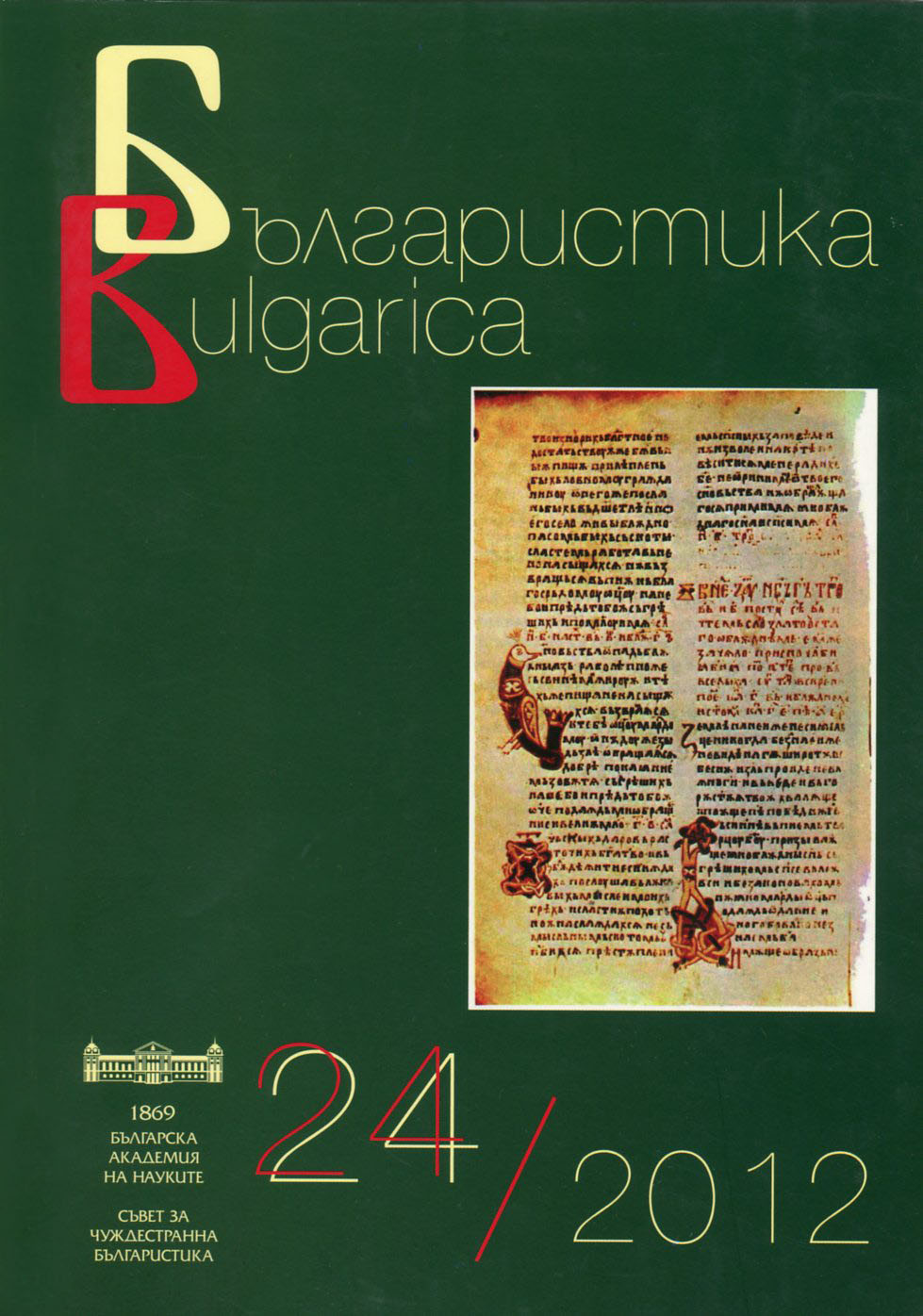
Дисертации
Defended PhD theses in Bulgaria in the field of linguistics, literature, history, folklore, ethnography and art studies
More...We kindly inform you that, as long as the subject affiliation of our 300.000+ articles is in progress, you might get unsufficient or no results on your third level or second level search. In this case, please broaden your search criteria.

Defended PhD theses in Bulgaria in the field of linguistics, literature, history, folklore, ethnography and art studies
More...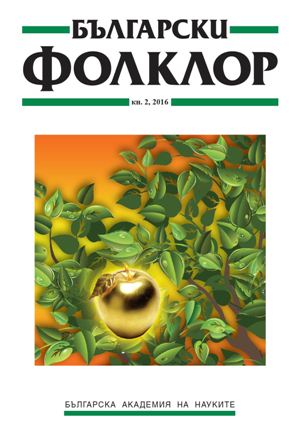
The paper concentrates itself on the figure of the Alevi-Bektashi musician (zakir, Imam Jafer) in Kardzhali region, who has at the same time religious, social, and artistic roles in society. Because of his characteristics, this figure could be categorized as an epic musician. His non-professional, but specialized activity is presented through the insiders‘ views on the specifics, educational manners, musicians’ quality assessment and their differences in performing styles. A young Bektashi musician from the region, whose biography and performing manner are marked by the complex interaction between his great talent and strong religious feelings is also portrayed in the paper. The interaction itself determines his complicated path as a musician and as a member of a community of heterodox Muslims.
More...
The article is dedicated to the folklore singing of the Gagauzs in Eastern Thrace. The authors analyze primarily archival and published material from the early twentieth century war period and the following displacement of large groups of populations, which raises the question of their cultural traditions and specifics. The songs are used as a source allowing the outlining of a number of specific characteristics of the ethnic and cultural identity of the Gagauzs. Special attention is paid to bilingualism in some records and its ritual functions. The article is reminiscent of Adela Peeva’s film “ Whose is this song?”. Undoubtedly it will again show the development and the fate of the spiritual heritage from the Ottoman period bequeathed to the later national societies and countries in the Balkans, where the heritage (which was previously common) is “assigne” and began to be felt “our” and “native” or, in other cases, is strongly rejected. The aim of the article, however, is to show that this initial space was not always so common and open and that the relationships in it (respectively in the culture in general) depended on local developments, different situations and participants. At least in terms of knowledge about the various cultures and traditions on the Balkans, together with the question “Whose is this song?” goes the question “Whose song is the best?”. That is, except the origin of the songs, which in many cases is common, it is also important to understand it, to know how it is valorized and constantly acknowledged.
More...
The way in which the phenomenon of border determines the being and the cultural specifics of the population inhabiting the adjacent regions becomes nowadays increasingly the subject of scholarly research. The region close to the southern Bulgarian border around the town of Zlatograd provides for a field study of how local people interpret the border and how it affects their lifestyle over the years. The historical and cultural memory of the border population clearly reveals the influence of the dynamics or stability of the border lane as depending on the current political reality. From a freely crossable border in the multiethnic Ottoman Empire, it turned into part of the “Iron Curtain”. Today it is actaully an ambivalent reality and a “frontier in infinite globalization”. The turbulent history of Zlatograd Region unquestionably plays a key role in the formation of the local “frontier” identity of the nearby population. The combination, from the one hand, of the dual nature of the border as both separating and defining, and, on the other hand, the process of globalization and ethnocentrism turns the fieldwork in a very specific experience which needs particular addressing.
More...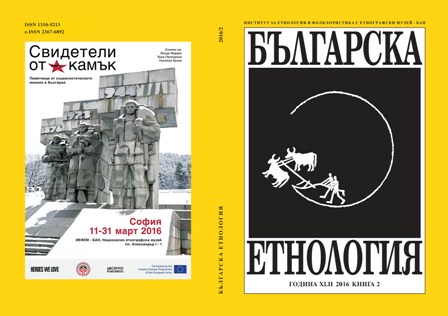
The paper is dedicated to a modern urban festival at the heart of which lies thetraditional celebration of „Kalinitsa“ preserved in Asenovgrad. The study reveals how this tradition is reconstructed today and turned into a cultural resource for the local community. The emphasis is on the cultural representations and functions ofthe festival and the importance attributed by local residents. The analysis identifiesthe main discourses related to „Kalinitsa“, paying attention to the role of collectivememory in shaping modern practices and models of celebration in the community. Who are the carriers of this local memory? To what extent it defines the essence ofthe festivities? In addition, the paper aims to answer the following questions: whatmakes the festival unique to Asenovgrad and what is its place in the modern urbanculture? In the disclosure of all aspects of this tradition the author relies on personal observations, stories of participants and earlier ethnographic researches.
More...
The Tobacco city is a case which at a certain moment attracted significant publicattention; at the same time, it is an example which combines various discourses. Inorder to find the specificity of this case, the article examines three more exampleswhich in geographical and historical aspect are appropriate for comparative researchon the problem, having in mind the commensurability in reference to size and significanceof the settlement and the cultural and industrial traditions, the relevant timecoincidence of the processes, as well as the geographical and economic representativeness.The research questions which the study attempts to answer are analyticalas well as completely practical, related to real management and political decisions.From an anthropological point of view, we are interested in the problem of the correlationbetween re-functionalizing with the purpose of settling, attracting investmentsand publics, and updating the use and access, one the one hand, and, on the other, thenarrative which represents the space itself in its capacity of heritage and the degree towhich this narrative should be preserved.
More...

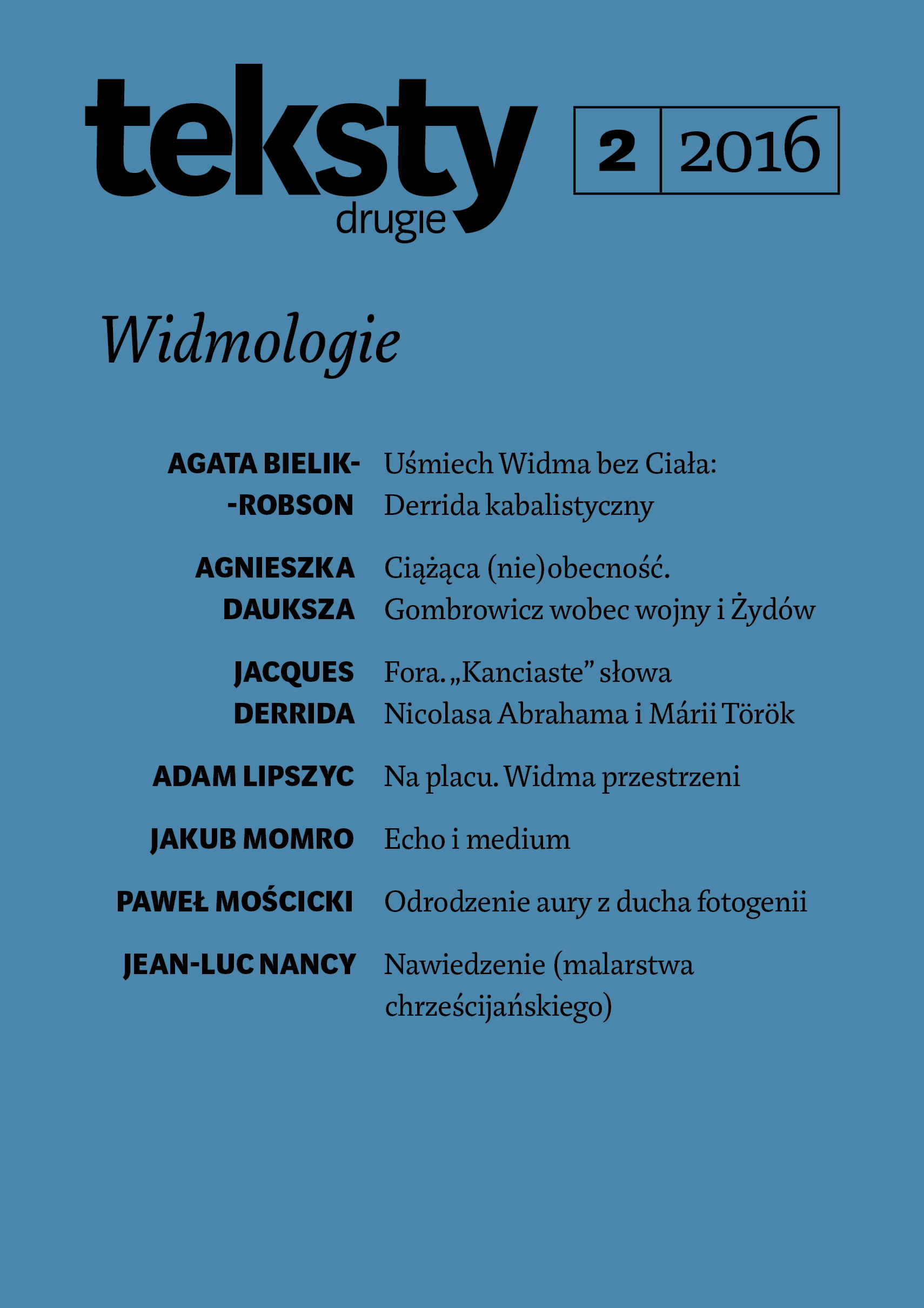
In his groundbreaking book The Image of the City (1960), the American researcher Kevin Lynch, creator of the theory of mental maps, explores the urban dwellers’ mental images and the ways in which these images correspond to the material forms perceived in urban spaces. Bukowiecki argues that in the case of a city such as Warsaw, where the dramatic events of the twentieth century have completely reshaped the urban fabric, we must broaden the scope of our analyses of images of the city to include the social image of objects that are immaterial, imperceptible, or spectral. This approach to reading the city, which has much in common with grounded theory and which has been applied by architecture critics, literary scholars and ethnologists dealing with the space of Warsaw, can be described as an exercise in the haunted spatial imagination.
More...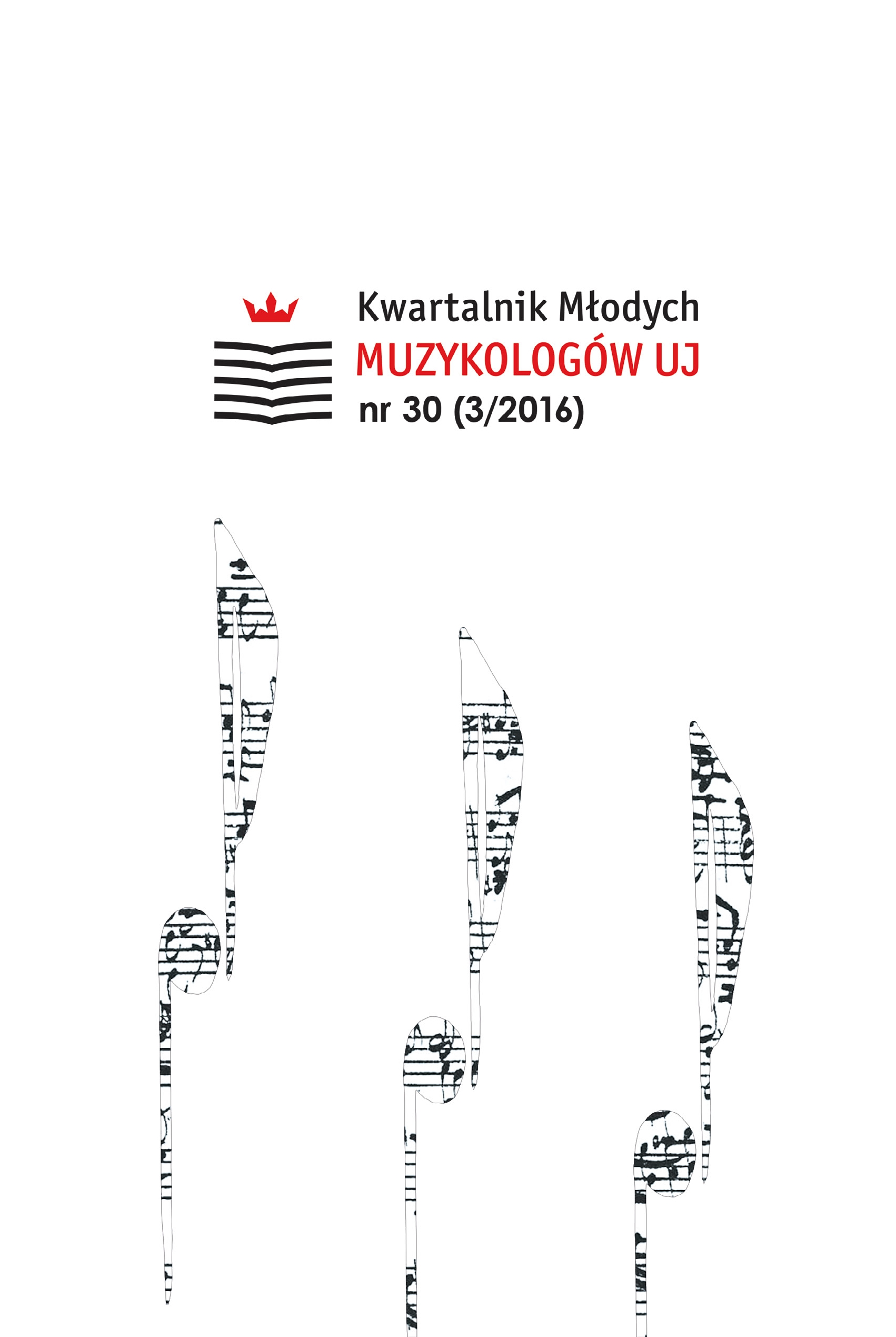
Rhetorical figures and rhetorical strategies in The Minotaur by Harrison Birtwistle The Minotaur is the opera composed by Harrison Birtwistle to libretto by David Harsent. It was premiered in 2008 in Royal Opera House, Covent Garden. Birtwistle’s musical language is basically modernist: atonal, centralised, based on interval or number patterns, pre-compositional operations, scales invented by the composer himself. His music is recognised as generally intellectual and connected with great avantgarde of 20th century. On the other hand, Birtwistle has never denied expression in his pieces. Titles and extra-musical inspirations are common (i.e. Melencolia 1). Birtwistle is inspired by music of the Middle Ages, Renaissance, and, less often, Baroque. The score of The Minotaur is full of rhetorical figures: both hypothyposis and emphasis. They are evident and immediately recognised in spite of contemporary, atonal language of the opera. Mostly, they are inspired by Baroque musical-rhetorical figures but there are examples of individual, contemporary means. Figures are local and connected with only one or few words. General atmosphere of fear and isolation can be created with ‘rhetorical strategies’, which are active much longer than figures. Birtwistle uses musical symbols as well. There are two main symbols in The Minotaur: the iambic ‘glissando gesture’ which opens the opera and appears in its key moments, and the ‘motif of fate’ – repetition connected with powers of fate and with tragic irony. The question is, why Birtwistle used so traditional and instantly recognisable means, as he is known for his highly intellectual music. Answer given in this text is that they stay in service of narration. They are audible and visible signs of telling the story.
More...
In this paper, the author compares aesthetic and stylistic attitude of two composers who worked in Jasna Góra Monastery at the turn of Baroque and Classical eras. The aim of this article is to capture the differences and similarities between the creative output of both artists by comparison of their pro processione pieces, which are a local variant of a church symphony. Collating complexive analysis, the author points characteristic solutions implemented by the composers, which gives rise to denotation their output as baroque or classical. In this way both composers were located on a stylistic timeline – Riepel as a baroque composer who already has implemented some classical elements into his style, and Żebrowski as a representant of galant style with baroque remainders. Outline of the compositional technique was depicted, what in the future can be a starting point for the further researches.
More...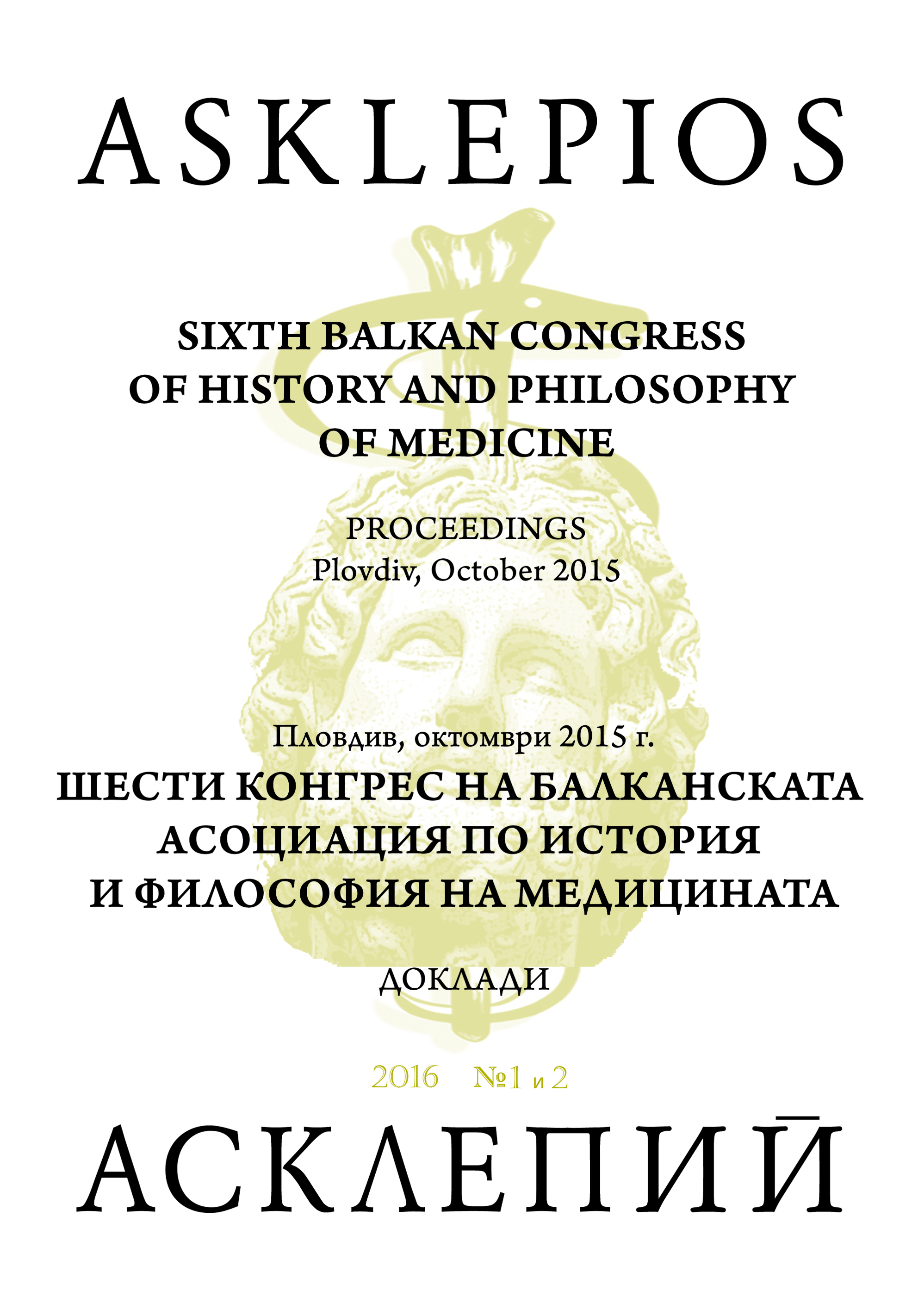
Subject of research is the activity of Amirdovlad Amasiatsi in Plovdiv. He is among encyclopedic figures in the Ottoman Empire during the in its expansion in the Balkans in the XV century. Its activity is reflected in official documents and original medical works. The new read activities of Amasiatsi aims not only to promote a medieval physician and pharmacologist working in the Bulgarian lands, but whose works reveal scientific and cultural trends imposed during XV – XVII century. The activity of Amasiatsi consider three aspects that represent three separate research tasks – the role of Amasiatsi as a physician and scientist in the specific historical conditions in the Balkans, focusing on its activities in the region of Plovdiv and placing this work in the context of trends imposed in called. «Dark ages» – the destruction of the Christian intelligentsia, the collapse of education and scientific knowledge depersonalization of culture. Positive trends are striving to defend the faith, creation of literature in spoken language, care for the education of students – future healers and pharmacologists. In this sense, what Amasiatsi in Plovdiv is an expression of moral, ethical and human values inherent in the spirit of the Hippocratic medicine scientific medical school in Constantinople.
More...
Management of city of Košice was after outbreak of World War I. exposed to the various types of challenges how to deal with war situation. It was necessary to improvise and adopt measures which were not applied in peace time. During the first phase of the war it was not going well for Austria-Hungary. The pressure of Russian Army upon eastern part of Austria-Hungary resulted in large number of refugees who were looking for shelter in Košice, from north-eastern counties and from region of Galicia. It was necessary to provide sufficient supplies of food and lodging for these people. Also it was needed to fulfill government requirements in regard to taking care of soldiers. A specific problem created upholding public order and security of civilians in Košice. It was no easy task, because war situation placed difficult and for peacetime unknown challenges for the magistrate. Paper is analyzing described issues and is devoted to solving individual aspects of described problems.
More...
The paper is divided into two parts together thematically related. The first part informs about fires occurring in Košice in 16th century on the basis of the literature, but most of the archival documents. The largest space is devoted to probably one of the biggest fires in the city dating to April 1556. The effort is not limited only to lay damages caused by this and other fires, but also points on the situation in the city after disaster, on the required financial and material assistance for the city from the emperor and from towns of Pentapolitana. The second part provides an insight into the incidence of arson in Košice, as one of the crimes against property, where output a specific perpetrators different management considerations and motives. It provides an informations about punishing offenders under the then existing regulations and laws. For both parts of the contribution the archival research was conducted in the Košice City Archives, to show the lesser known facts of the history of the city, as fires and other disasters have remarked economic and social face of this and later periods.
More...
Constantinople and the administrative system in the Roman Empire in the 4th century. The new administrative organisation of the Roman Empire stabilized in the course of the 4th century due to the reform activities already initiated by Diocletian and the consolidation of reforms of Emperor Constantine. The foundation of Constantinople inspired a burgeoning intricate bureaucratic system comprising central and local authorities. Some public authorities got strengthened and some were created such as praepositus sacri cubiculi. The outlined pattern of the new political administration of the Empire was managed by a great number of officials, and bureaucracy dominated in the public organisation. The model of this bureaucratic state included new, or more precisely, modernized institutional authorities encompassing the concentration of his political power. Centralized control of state authorities was creating a new model of political power, being characteristic of the absolute monarchy of the Oriental type.
More...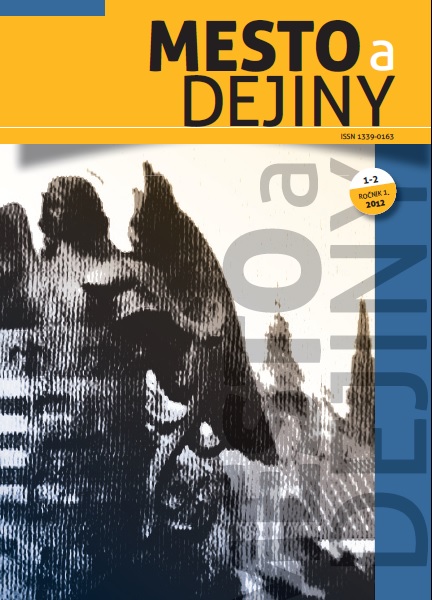
Košice represents an atypical European town in the 16th century. Unfortunately, due to numerous destructive events, relatively small number of documents has been preserved from this period. The testaments, which originated in particular period, were selected as the source for the reconstruction of everyday life. The primary aim of this paper is to provide an overview of the existing research on the townspeople of Košice in the 16th century. Secondly, the possible difficulties that might arise during the research of the topic are being listed. The final part of the paper contains specific examples of the life experience of the selected inhabitants of the town.
More...
The aim of this paper is to provide an overview over the last wills as the historical sources. The first part of this work consists of the overview of published relevant works; it also summarised the well-known facts about purpose and creation of the last wills. The paper describes its form, possible use as well as their development. The emphasis is put on the concrete manuscripts originated from the region of Kraków from the 17th and 18th century. The last part of paper is dedicated to specific section of testament – the invocation.
More...
Market town Miskolc has gone into the possession of pledge holders in the Turkish Era who preserved its medieval character and were elected by the serf-burgers. The serf-burgers continued to elect the town’s self-administration i. e. the council and the chief judge, which started to keep permanent protocols (Towns’ Book) from 1565. Chief judges emerged from among the serf citizens of the town, no nobleman could hold this position, but from mid 17th century, only noblemen, what is more, landowners filled this function. In the 16th century, the urban elite consisted of rich serf-burgers, craftsmen and a small number of merchants, but there was also a small ’outsider’ noble elite attached to the castle and dominium of Diósgyőr. In the 17th century, there were significant changes in the town’s society and elite. An increasingly larger numbers of the citizens applied for nobility, and due to the Turkish wars, a lot of noble families also moved into the town from the countryside starting to form a new noble strong group in Miskolc.
More...
The Jewish community in Kraków were an example of the organizational forms used in the Jewish communities in the Polish-Lithuanian Commonwealth. They varied from community to community. The administration system and system solutions were defined under state authority regulations, local and private legislation and internal regulations of Jewish authorities. For the Jewish community in Kraków in the modern period the most important internal sources were the Kraków Community Charter and the community record books – pinkasim. People who worked for the community could be divided into two groups. To the first group belong the Kraków Community Board (parnasim, towim and fourteen kahal members). In addition to the Kraków Community Board there were a number of other officials of the community. They had several areas of responsibility: finances, maintenance of order in the Jewish quarter ad supervision of crafts and trade. To this group belong also judges [three to each of the three governing bodies]. To the second group of the people working for the community belong rabbi, cantor, ritual slaughterer and beadles, community secretary, midwives, doctors, street cleaners, public bath personnel, prison guards and sentries watching over the gates leading to the quarter. The analysis of the list of the Kraków’s community officials and functionaries showed as the power was in the hand of a small groups of inhabitants. Nevertheless, the system of the communal institutions proved very durable, probably because till the end of the 18th century there was no other alternative solutions.
More...
At the end of the16th century Kraków’s Jewish community was the most important cahal in Poland. This situation lasted until the middle of the17th century. Just a century later Kraków’s elders were begging the voivode of Kraków to protect them against claims of smaller communities, such as Wodzisław, which demanded jurisdiction over Jews in villages just by the walls of Kraków’s agglomeration. The lecture will show how the changes in Jewish demography as well as the king’s resignation from jurisdiction over Jews in private estates and other changes in political system of the Polish Commonwealth affected the situation of Kraków’s community and resulted in its loss of power in the state and among the Jewish population in Lesser Poland.
More...